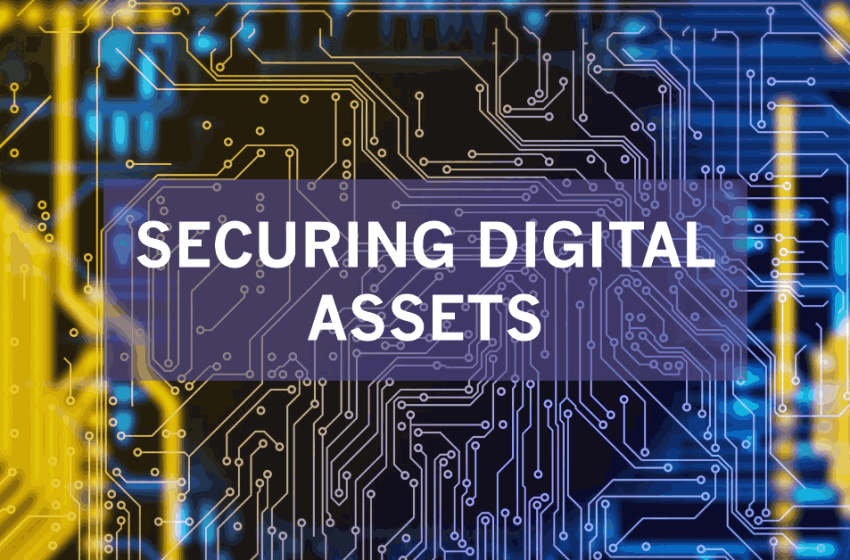How can banks protect their digital assets?

The onset of the 21st century completely transformed the technological landscape. Many businesses and companies started adopting the digital world. Access to information and data became available at individuals’ fingertips.
The digital revolution has brought unprecedented convenience, but it’s not without its risks. The banking industry, like many others, has had to grapple with the rise of online threats and vulnerabilities. This posed a serious challenge to the security of its digital assets. In response, banks have been swift to adopt the latest technology and best practices to protect their resources.
Keep reading this to learn how banks can protect their digital assets and build trust among their clients.
Top 6 ways banks can protect their digital assets
Even before the outbreak of COVID-19, digital banking kept rising substantially. However, banking and financial institutions were among the industries most targeted by hackers and ransomware. This is why it has become increasingly important for them to adopt the best security practices. By taking steps to safeguard confidential data and information, banks can foster a lasting relationship with clients.
Let’s learn some ways that can help banks protect their digital assets and protect themselves from financial damages.
1. Threat Identifications
Financial institutions like banks have numerous software and hardware technologies. Each part plays a vital role in their day-to-day and online services. However, every component, be it digital or physical, is prone to threats.
Many threats can take down your online services, such as , ransomware, phishing, and theft. This is why, with the assistance of experts, you can identify potential threats and vulnerabilities in your financial system. You can hire Digital risk protection services to help you identify existing and emerging digital threats.
2. Risk Mitigation
Once you’ve narrowed down the list of threats, you need to prepare a list of risks that can affect your bank. Some risks that can affect digital banking include customer data leaks, fraud, identity theft, and cyber-attacks. Such risks are constantly evolving, and banks need to stay ahead of the curve.
Without a robust risk mitigation strategy, banks are vulnerable to financial losses, reputation damages, and legal problems. With the assistance of experts, you can create a comprehensive Risk Management Framework to minimize potential dangers. You can also request a professional security solutions provider to conduct periodic risk assessments for enhanced protection.
3. Digital access mapping
Everything your organization and clients do online is part of a digital footprint. Any transaction or access record should be preserved. If there is no digital footprint, you can never be sure when, why, and who accessed your digital assets. You can get in touch with security experts who can create a digital access mapping for your online banking system.
The digital access map also lets you create authorized user access for specific individuals. Moreover, it can let you track any unsanctioned access or breach in the system. You should always work with service providers and vendors with a service level agreement (SLA) to safeguard your digital assets.
4. Automating operations
Digital automation has reduced human errors that can contribute to risks. Automating operations allows effective workflow management and leaves a digital audit trail. This enables banks to reduce and mitigate any unwanted threat situations.
A reputable security provider can place certain thresholds and triggers to safeguard your bank assets when certain limits are breached. You can be certain that even during off-hours, the system will kick in and cut off access to vital information. This allows you to reduce manual intervention in case of pre-empted actions.
5. Securing the financial ecosystem
One of the most important factors to safeguard online banking is to secure your financial ecosystem. You can incorporate numerous practices to upgrade your security architecture and banking system. Upgrading your malware, antivirus, and OS along with the latest hardware is one of the steps.
With the help of an expert, you can incorporate data encryption so that all financial information is unreadable. You can also store all your data in one secure location, which will reduce the possibility of threats and attacks. Another useful method is to install Honeytokens in your financial system to get swift threat alerts.
6. Continuous monitoring
To protect your banking assets, you need to continuously monitor all your systems and processes. The moment you let your guard down, you’ve invited potential threats and thieves into the system. This is why you should have a strong monitoring system in your financial systems.
A reliable security agency can implement a data monitoring system for your institution. This will allow you to detect and remove vulnerabilities that can attract threats. Moreover, you can deploy threat intelligence solutions to monitor internal and external ecosystem susceptibilities. You can acquire Digital risk protection services to place a robust monitoring solution for online threats.
Strengthen the safety of your digital assets!
Banks and financial institutions are at an increased risk today more than ever. You can never be sure when the next attack can target your organization. However, security specialists can provide the best security system and solutions for your ecosystem. This can enable you to protect your digital assets and your client’s confidential information online.

